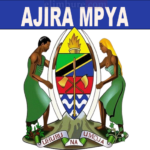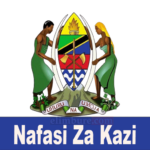TOPIC 2: LISTENING FOR INFORMATION | ENGLISH FORM 4
TOPIC 2: LISTENING FOR INFORMATION | ENGLISH FORM 4
LISTENING TO INSTRUCTIONS
Information comes from various sources, one of the source is what people say. People may talk to request or give instructions.
What to do when listening for Instructions
Be attentive – concentrate on what you are being instructed.
Take note – note down the instruction so that you can use later.
Be careful – for the instructions that need immediate response.
Pay attention to instruction words – these sentences are normally in imperative forms. Example, take your pen and paper, draw the picture, close your eyes etc.
Sometimes instructions are meant to show steps in doing something – you should be very careful because missing one steps may distort the whole exercise.
Example: –
The following are the steps that should be followed when you want to start a compute: –
- First connect the computer to the power source.
- Then switch the power button on so that power can enter the computer.
- After that, press the button on the CPU, you will see some light indicating that the CPU is on.
- Thereafter, press the button on the monitor. Wait for a few seconds you will see the word “Windows” on the screen.
- Finally press the button labelled “star” on the keyboard or click on that word on the screen, there you can start working with your computer.
GIVING INSTRUCTIONS
Instruction can be given in many ways, listening things to be done with the imperative form of the verb and words such as first, then and next is one common way.
In giving instructions various expressions are used depending upon the functions they are intended to fulfill whether sequencing, stating out, continuing or finishing. The following are the common expressions people use when giving instructions:
| Sequencing | First (you)………, (then you)………, next (you) ……, Lastly (you) ……….. |
| Stating Out | Before you begin (you should) ………., the first thing you do is …………. Etc. |
| Continuing | After that, ………., the next step is to ……….., once you have done that then………. |
| Finishing | The last step is………, The last thing you do is ……………, In the end………… etc. |
Example:
Calculating the Standard Deviation
First, write down the scores in an order
Then, work out the mean
Now calculate how much each deviates from the mean.
Next, squire each of these deviations.
Add them all up.
Now divide by the number of scores.
Lastly, find the squire root.
This is the standard deviation.
- LISTENING FOR MAIN IDEAS AND TAKING NOTES
Note taking is the practice of writing pieces of information normally in an informal or unstructured manner. One major specific type of note taking is the practice of writing in shorthand (Note book).
Methods Used in Note Taking in Listening
Charting – it means that one creates a table with rows and columns. It is good facts and relationship.
Outlining – it is the common system that consists of headings that use roman numerals, letters of alphabet. Example:
- First main topic
- Subtopic
- Details
- Details
- Second main topic
- Subtopic
- Mapping – ideas are written with lines connecting them together in a tree like structure. Example: Subtopic
Main topic
Subtopic
- Sentence method – in this method every new thought is written as a new line. Example:
Topic ………
Subtopic …….
Topic ……………
Subtopic ……….
Techniques of Note Taking
Identify the main points.
Be brief
Omit or remove unnecessary words.
Use abbreviations when taking note.
Summarize the information.
Use number, alphabet or bullets in outlining the points.
Organize the information logically and in paragraphs.
DICTATIONS
Dictation is the learning technique that involves listening to a particular text read then to write down what you hear.It a test or exercise of language comprehension in which students write down words spoken aloud by a teacher.
Tips for writing effective Dictation
- Listen attentively
- Write quickly what has been read.
- Consider the punctuation
Activity:
Teacher to read the following passage the student to write down: –
Nouns are the group of words that tell the names of people, things, places, animals and concepts Example pen, Juma, pencil, Mororgoro, Dar es Salaam, boy, girl, book, cake, table, money, computer etc.







Congratulations for the good notes.